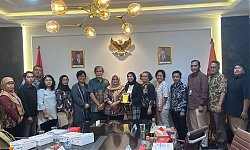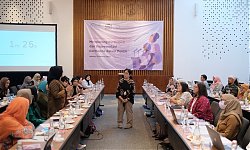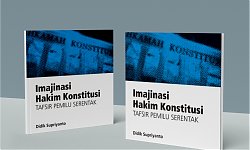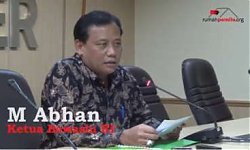Recently, the results of the 2022 Philippine Presidential Election have become a global public spotlight, including Indonesia. As spectators, Indonesian netizens were quite active in commenting on the election results in the Philippines, which won the presidential candidate Ferdinand “Bong-Bong” Marcos Jr., son of the famous Filipino Dictator, Ferdinand Marcos Sr. and Sara Duterte as Vice President.
The return of the Marcos Family, along with Princess Rodrigo Duterte, is certainly worrying. Because, both of them were born from elections with relative integrity. The difference, perhaps we should be grateful for, is that the electoral system used by the Philippines is quite different from Indonesia and can be a lesson for Indonesia.
Philippine Election Landscape
The Philippines is one of the democracies in Asia. Like most democracies, the 1987 Philippine Constitution guarantees the right to vote and is facilitated as much as possible. The last Philippine general election was held on May 9, 2022. This election was held simultaneously to elect presidential candidates, regional heads, and legislators at various levels.
At the national level, elections are used to select presidential and vice presidential candidates separately, senators directly, and party-list. At the local level, elections are used to elect governors and deputy governors separately in 81 provinces, mayors and deputy mayors separately in 146 cities, and municipal mayors and municipal vice mayors in 1,488 municipalities throughout the Philippines.
Meanwhile, for legislative elections, Filipinos elect members of the House of Representatives with city and district-based electoral districts. In addition, at the local level, voters will choose members of Sangguniang Panlalawigan (Provincial DPRD), Sangguniang Panlulungsod (City DPRD), and Sangguniang Bayan (Municipal DPRD). All types of elections, carried out simultaneously.
The total number of voters in the 2022 Philippine elections was 67,442,744 people, with details of 65,745,529 voters in the Philippines and 1,697,215 people abroad. Voter registration itself has ended on October 30, 2021. In addition, there are 421,876 precincts (TPS) which are grouped into 106,174 clustered precincts. The number of polling stations is further grouped into 37,141 voting centers which are usually public schools that are temporarily converted.
Presidential Election System
The Philippines has a presidential system of government. In the 1987 Philippine Constitution, the President and Vice President must meet requirements such as being born and being a native of the Philippines and being registered as voters. The president is also at least 40 years old and has lived in the Philippines for at least the last 10 years before the election. The same requirements also apply to the vice president.
However, unlike Indonesia and other presidential countries, the presidential and vice presidential elections are not chosen in one package, but separately. A presidential candidate may campaign with a vice presidential candidate as his running mate. For example the pair Bong-Bong Marcos and Sara Duterte or Leni Robredo and Kiko Pangilinan.
However, the presidential candidate's victory did not determine the victory of his colleagues. One example is President Duterte and Vice President Robredo who did not campaign together. In his leadership, the two often disagree. This certainly increases the potential for cohabitation and has implications for executive instability. The following is an illustration of the ballots for the presidential election in the Philippines:
Source: ANFREL, “Introduction to the 2022 Philippine National and Local Elections”, 2022
The President and Vice President are elected through a first past the post and one round system. Independent presidential and vice presidential candidates without parties are also possible. The president and vice president also have the same term of office, which is six years. In addition, both have only one term and are prohibited from participating in the next election.
Legislative Election System
At the national level, the election for members of the House of Representatives (DPR) uses a parallel mixed system. The FPTP plurality system is used to elect members of the DPR with city-based or municipal-based electoral districts. That is, each city and municipality, has one representative member of the DPR. however, some congested cities have more than one constituency, such as Manila which has 6 constituencies and seats.
Meanwhile, 20% or 63 seats in the House of Representatives will be filled by the party-list. The party-list itself is a unique room that is not found in other countries. Unlike the regular parties that nominate their candidates, what appears on this list is the name of the party-list itself.
In party-list elections, the Philippines uses a proportional system with country-based electoral districts. This means, voters across the Philippines will get the same party-list list. In addition, the party-list will have a representative if it passes the Parliamentary threshold of 2% of the vote. In Parliament, the party-list is represented by 1-3 representatives, depending on the number of votes.
In addition, the legislature also has senators who are elected through a majority system of block voting type. In this system, voters are required to vote for 12 candidates on the electoral roll. Like the party-list, the election of the senate also uses a country-based electoral district. Later, there will be 24 elected senators who get senate seats.
At the local level, there are Provincial DPRD, City DPRD, and Municipal DPRD. The three entities are elected through elections with the same system as the senate elections at the national level, namely the block vote system. At the provincial level, voters are required to choose two candidates with one provincial electoral district. while at the city/municipal level, voters are required to choose 6-8 candidates on a list on ballots with the same electoral district format.
Regional Head Election System
The concept of regional autonomy in the Philippines is quite different from that of Indonesia. Although there are provinces, cities, and municipalities, some cities have their own classification. There are highly urbanized cities (HUC) and independent component cities (ICC).
Cities with this status are not under the provincial government but run their government independently, in addition to other component cities that remain under the province. This certainly affects the local Philippine electoral system.
Voters in cities with HUC and ICC status will not be involved in elections at the provincial level. They will only elect the mayor, deputy mayor, and sangguniang panlungsod (City DPRD). Similar to the presidential election system, the concept of separating the election of mayor and deputy mayor also occurs in local elections. Similar to executive elections at the national level, the election for regional heads at the provincial and component city levels also uses a first-past-the-post plurality system.
Closing
The differences in the electoral systems of the Philippines and Indonesia will certainly have implications for differences in political phenomena in each country. For example, the low effectiveness of the presidency because the president and his deputy are not elected in one package, or the low attention of voters on local elections because all types of elections are held simultaneously. Some of these aspects can be a lesson for elections and implementing democracy in Indonesia. []
KAHFI ADLAN HAFIZ
Researcher Association for Elections and Democracy (Perludem)











